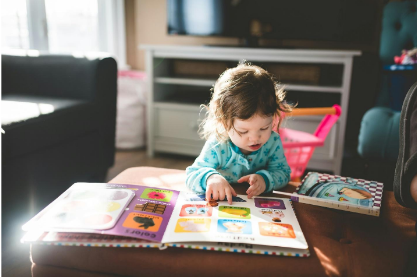Crafting a children’s book is a magical endeavor. It is about weaving words and illustrations that spark a love of reading and ignite young imaginations. A good children’s book leads to effective learning. But with so many books on the shelf, it is important to have your children’s books stand out.
A children’s book helps a child foster a love for reading from a young age. It serves as a window to the imagination while offering glimpses into fantastical worlds, diverse cultures, and timeless moral lessons. An engaging children’s book ignites curiosity and sparks creativity.
Investing in interesting children’s literature is not just a matter of entertainment but the worthiest investment in your child’s intellectual and emotional development. Here are 8 ways to infuse your children’s book with intrigue and keep those little readers turning the pages:
Craft an interesting plot
A children’s book with an interesting plot is what catches the attention of most parents. Weaving a plot that is both interesting and thought-provoking is what makes a children’s book successful. You can Incorporate twists, turns, and moments of suspense to keep young readers eagerly turning the pages.
On top of that, you can also develop characters that are relatable, diverse, and dynamic. You can do so by giving them distinct personalities, quirks, and goals that children can empathize with and root for throughout the story. It creates an entertaining and memorable experience for children.
Having a relatable plot and interesting plot can forge a deep emotional connection with young readers and develop a strong sense of kinship.
Use vivid descriptions
To ignite the flames of imagination in young minds you can add vivid descriptions. By skillfully weaving descriptive language into your narrative, you can transport children to thrilling adventures. Paint vibrant pictures with your words, engaging all the senses to create an immersive reading experience.
You can do so by describing the scent of freshly baked cookies, the feel of soft grass, or the sound of crashing waves against the shore. These sensory details serve multiple purposes like bringing your story to life and encouraging children to imagine themselves alongside the characters.
Sensory details and vivid descriptions build understanding and induce empathy in the children. They get to learn about diverse characters and settings which ultimately help them develop a deep appreciation for different cultures and perspectives.
Incorporate engaging elements
Learning is an interactive process; it goes both ways. To make your children’s book more interesting it is important to integrate interactive elements that may make the children revisit their books. The strategic placement of these elements helps develop a positive bond between children and book reading.
You can incorporate the ideas like revealing hidden surprises, solving puzzles, or uncovering secret messages. These elements invite young readers to become active participants in the storytelling process, turning each page into an exciting adventure waiting to be discovered.
Engaging elements can have multiple benefits such as reinforcing key concepts, promoting problem-solving skills, and encouraging critical thinking. It makes the reading experience both enjoyable and educational.
Integrate humor
To add an extra layer of joy to your children’s book you may consider infusing your story with humor that resonates with children and their parents. Humor adds a delightful element of surprise and laughter that makes the experience amusing. Keep the book light-hearted with a meaningful message.
Humorous characters and silly situations can associate an energetic and heartfelt mood with the habit of reading. It helps the children retain the story in their memory for a long time period. Through laughter, children experience joy and relaxation, which can reduce stress and enhance their overall well-being.
Add moral lessons
Valuable life lessons and moral themes in a children’s book can help with the actual learning process of the children. The meaning of a book for a child is not distraction or entertainment only, it has to have a purpose. Through books, children can learn practical lessons and cultivate a positive learning experience.
By relying on age-appropriate themes and characters, you can incorporate lessons that teach kindness, empathy, and other essential values in your children’s book. Moral lessons and thought-provoking dilemmas shape children’s understanding of right and wrong and the power of decision-making.
Make it visual
Visual memory is the strongest of all memories and it helps retain the information for a long time. Adding visuals like colors and lights to children’s books can elevate the reading experience to new heights of enchantment and wonder. The visuals attract the children’s attention.
You can use vibrant hues and light effects to breathe life into characters and settings. Book illustrators hold the key to unlocking this magical world. You can skillfully blend colors and incorporate imaginative lighting techniques to create captivating illustrations that transport children to fantastical worlds.
Add sounds
The process of reading and seeing too many words on the page can be boring for children. You can transform this tedious process into the most thrilling one by adding sounds like voices and music to your children’s book. You can bring the story to life in a dynamic way by incorporating voices.
You can use voices to convey excitement, express fear, or add funny accents to your book. Adding music makes the reading experience multisensory which ultimately enhances the mood of the young reader.
Hearing expressive voices and melodic rhythms can also help improve listening comprehension and phonemic awareness of the children.
End with a memorable conclusion
The conclusion of a book leaves the final impression and it should be well-worked. Therefore, conclude your story with a satisfying and memorable ending that makes the reading experience memorable for children. Do not leave loopholes or loose ends for children because it can be disturbing for the children.
While taking care of children’s mental well-being and their positive association with reading experience, it is important that your book should have a well-crafted conclusion. Your book’s conclusion should provide a sense of closure to your reader while also leaving room for imagination and contemplation.


